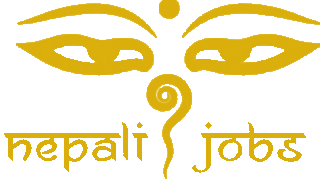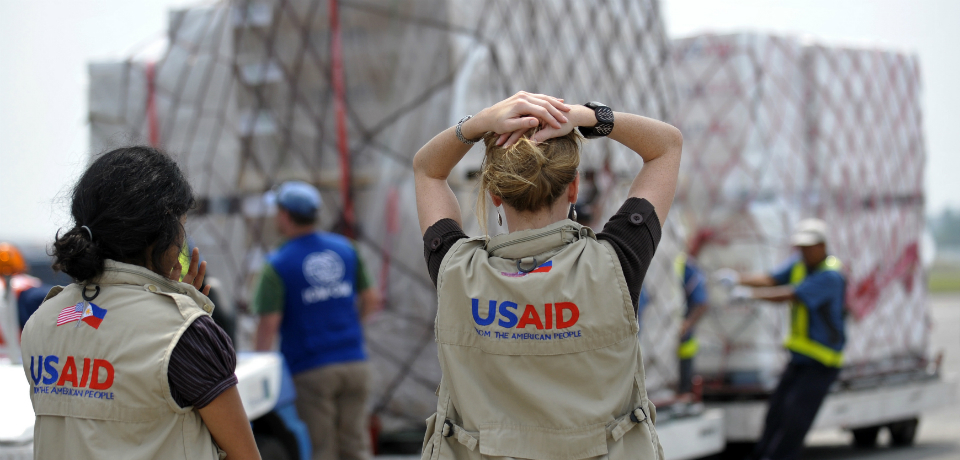USAID GLOBAL HEALTH SUPPLY CHAIN PROGRAM
PROCUREMENT AND SUPPLY MANAGEMENT
Scope of Work for Individual Consultant (STTA)– Strategic Sourcing and Procurement of Quality Health Commodities
1.Project Overview
The purpose of the USAID Global Health Supply Chain Program-Procurement and Supply Management (GHSC-PSM) project is to ensure uninterrupted supplies of health commodities in support of U.S. government-funded public health initiatives around the world. The project provides direct procurement and supply chain management support to the President’s Emergency Plan for AIDS Relief (PEPFAR), the President’s Malaria Initiative (PMI), USAID’s family planning and reproductive health program, and Office of Maternal and Child Health Nutrition. To support U.S. government-funded global health activities, GHSC-PSM manages a wide array of health commodity procurement services and provides related systems-strengthening technical assistance encompassing all elements of a comprehensive supply chain.
In Nepal, GHSC-PSM supports USAID country strategies and priorities that fall under the following three project objectives:
- Global commodity procurement and logistics
- Systems strengthening technical assistance
- Global collaboration to improve long-term availability of health commodities
GHSC-PSM support is aligned with the National Health Policy of Nepal and the National Health Sector Strategy (NHSS) 2015-2020 which seeks to reduce stock outs of health commodities and to strengthen health systems, infrastructure, human resource management, procurement and supply chain management, and health information management to increase access to health services.
- Background and Justification
Logistic Management Division of Department of Health Services is the principle agency responsible for ensuring availability of health commodities and devices at the service delivery point. Procurement process so far has been a challenging exercise to accomplish successful procurement for entire range of health commodities including free essential drugs. This could be attributed to diverse elements of procurement and supply chain process. Some of the health commodities and essential drugs are not available due to reasons associated with manufacturers inability to comply with regulatory requirements and others due to limited market size, and technological feasibility, market failure and malpractices related causes. Some others health commodities could not be procured due to lack of proper exercise on mapping products availability particularly with regard to their manufacturers at domestic and international market, misalignment of specifications and available products, impracticable price estimates, fragmented and un-coordinated procurement and supply chain. Other reasons are lack of skill set to do procurement, lack of attention on vendor qualification and development, suppliers instead of manufacturers oriented bidding requirements, poor quality assurance mechanism and GMP compliance, acceptance of products not existed in the national market but offered as only for supply, lack of manufacturer’s / suppliers prequalification approach, scanty or no participation of international suppliers / manufacturers on ICB, failure to adopt specification in the procurement particularly at sub-national level, procurement focused mainly on one of the several available methods, uncertainty about distribution channel, etc. When such diverse key products and their source related attributes are uncertain, procurement and supply chain of health commodities cannot be ascertained and systematic. To establish a system which is sensible, dynamic, widely participatory and responsive to the situation, an evidence-based document that agencies mandated with PSM responsibilities at national and sub-national level could refer and utilized in PSM process can be of immense value. All these are potential aspects for the scoping of sourcing. Contextualized sourcing exercise should guide PSM activities towards smooth and predictable outcome focused on to the right product with the right price.
Sourcing strategy therefore focuses procurement end goals firmly aligned with the program enterprise goal to generate, “More Health for the Money.” Sourcing strategy will facilitate procurement of pre-qualified health commodities from a prequalified source if not prequalified manufacturers enabling a cohesive supply chain that maximize the value of all products procured, sustain healthy market and is informed by global health policies and country guidelines.
Common sourcing strategy tenets, across all health commodities category as explained in the Draft strategic sourcing strategies, GHSC-PSM Single Award IDIQ Transition Deliverable include:
- Support of global healthcare mandates and country guidelines and requirements
- Support of global health care mandates and country guidelines and requirements
- Increased global stakeholder collaboration
- Improved demand forecasting and supply planning
- Strengthened and focused supplier relationship management
- Sustain healthy markets through a wide variety of local and global suppliers
- Streamlining and standardizing product offerings
- Enforcing product quality and ethical business standards,
- Generating maximum value across the supply chain
In the context of Nepal, Program Divisions of Department of Health Services (DoHS), Provincial Health Offices/Regional Medical Stores, District Public/ Health Offices (D/PHOs), and Local Level Governments (LLG – municipalities and rural municipalities) are provided with a budget for procuring health commodities in addition to LMD central supply.
In the federal context of the country, the role of the LMD may be limited to sourcing and procurement strategies; including application of approved and transparently accessible specifications by properly reflecting it in tender document and source selection; implementation of framework agreement for multi-year contract and handling international bidding for specialized internationally prequalified commodities, etc. Routine sourcing and procurement of major health commodities being handled by the provincial government or by LLG. Appropriate institutional structure, availability of human resource with adequate knowledge and skill sets as well as capability for undertaking this responsibility could surface as a huge gap at all those levels.
Besides local level problems, as per the report of UN Commission on Life-Saving health commodities, there are external barriers to access and use of priority health commodities due to regulatory, question on quality of APIs, market failure and supply and demand related challenges. Commission’s recommendations such as improved market situation, national delivery, integration of private sector and consumer needs, if worked out well, is expected to guide sourcing and procurement related activities in the right direction. Therefore, an exercise on sourcing in general and program specific commodity category in particular has been a priority for USAID GHSC-PSM Program.
In principle, sourcing strategy should enhance compliance with standardized product specification, product lists including dosages and pack sizes, enabling collaborative procurement, opportunity for global collaboration to leverage pooled procurement, negotiate best-value contracts with top international and national wholesalers and manufacturers, increase participation of prequalified local/regional suppliers and identify potential new suppliers where possible considering quality, accessibility, capacity, registration to build local capacity and diversify supplier base. Further, the aim is also to reduce supply chain complexity, decrease lead time through supplier management, and handle risk to commodity quality.
Strategic sourcing process leads to a situation where emerging health commodities markets get matured and suppliers come to a position to provide quality assured, cost-effective health commodities while treatment regimens evolve. This warrants a clearly spell out strategy, plan and key considerations on individual or categorical commodity.
- Purpose and Statement of Work
It is an approach to supply chain management that formalizes the way information is gathered and used so that an organization/GOV can leverage its consolidated purchasing power to find the best possible values in the marketplace.
The steps in a strategic sourcing process were defined,
- Assessment of a GoN current spending (what is bought, where, at what prices?) of health commodities.
- Assessment of the supply market (who offers what?) of health commodities.
- Total cost analyses, market price analysis (how much does it cost to provide those goods?).
- Identification of suitable suppliers.
- Development of a sourcing strategy (where to purchase, considering demand and supply situations, while minimizing risk and costs).
- Negotiation with suppliers (products, service levels, prices, geographical coverage, Payment Terms, etc.) – Based on PPA 2063
- Implementation of new supply structure – means of transport, port of entry.
A slimmed down strategic sourcing process was defined,
- Data collection and spending analysis
- Market Research
- Negotiations – Based on PPA 2063
- Contracting – Based on PPA 2063
- Implementation and continuous improvement and revision
The purpose of this scope of work for the national STTA is to
- Review current sourcing and procurement and supply chain framework / system overall including available and enforced international sourcing strategies – organizational, regulatory, strategic, procedural, network alliance and pooling, training materials / guidelines and external collaboration,
- Prepare National/International list of vendors (Manufacturers, agent or suppliers) for each product/commodity, List of WHO GMP certified company which include check list for bidder eligibility, MRP along with address details)
- Processes map for prequalification of supplier(s)/ manufacturer(s)
The national consultant (STTA) and GHSC-PSM Nepal, in collaboration with all stakeholders will draft a strategy and guideline on health commodities sourcing at national and provincial and/or council level for adoption by DoHS / MoH, Government of Nepal (GoN) guided by National Health Policy (NHP) / National Health Sector Strategy (NHSS), procurement related regulatory framework, policies and international best practices. Working mainly with LMD and DoHS, medicine regulatory agency (DDA), DoHS centers and divisions, PPMO, medicine producers, importers and their relevant associations, Ministry of Health and other pertinent line ministries, and EDPs and PPP agencies, national and international private sector organizations and stakeholders, the STTA will undertake the following tasks:
- Carry out desk review of existing PSM framework and sourcing approaches in practice and establish a gap in the light of prevailing best practices,
- Conduct a survey / market analysis of sourcing and offering trend of priority products, that is essential drugs for free distribution including key RMNCAH products and develop a list of potentially eligible supplier(s)/manufacturer(s) both prequalified and certified types for each product or per product therapeutic category and as explained in the relevant specification. Recommend effective mechanism/ processes map to prequalify products and potential suppliers/ manufacturers
- Expected Outcomes:
- A dynamic evidence-based approach to strategy / guideline for sourcing quality health commodities including key RMNCAH (Reproductive Maternal, Newborn, and Child Adolescent Health) commodities.
- Submission of final technical report/Sourcing document with key recommendations
- Expected Deliverables and Timelines:The Consultant on Sourcing Strategy will produce following deliverables:
| Deliverable No | Description | Deadline |
| Deliverable 1 |
Health Commodities = All essential drugs, MNCH commodities, FP commodities, Malaria, TB, Nutrition (As per the LMIS list for Medicines and commodities) | July 6, 2018
|
| Deliverable 2 |
| July 20 2018 |
- Reporting:The Consultant on Sourcing Strategy will report to the PSM Health System Strengthening (HSS) Director in Nepal.
- Timeframe Details:This assignment is expected to take place in Kathmandu, Nepal from July 1 to July 20, 2018. The estimated LOE of the consultant (STTA) is 20 days.
- Deadline:Proposals should be submitted based on the guidelines listed in SOW. Proposals and all correspondence and documents relating to the offer shall be in English. Proposals must be sent by email to [email protected] no later than June 25, 2018 by 5:00 pm Kathmandu, Nepal time.



